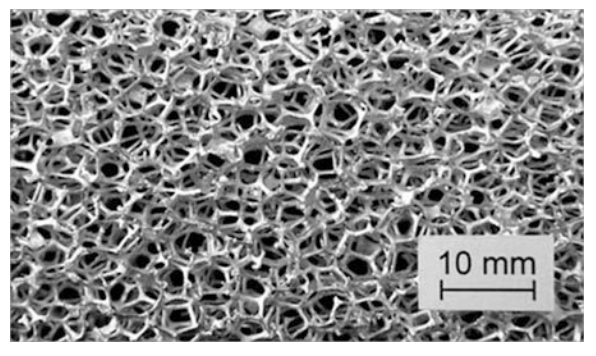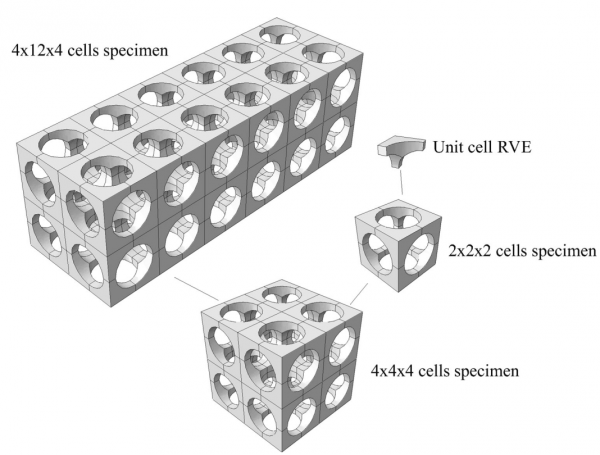Mechanics of Structures and Materials
The characterization of materials with complex mechanical behaviour is a fundamental step to desig structures composed by new or advanced materials. Metallic foams are an example of material with complex mechanical behaviour that can be applied in lightweight structures, vibration dampers, biomedical implants and impact energy absorbers.

Figure 1: Aluminum foam with open cell (DUOCEL®).
These materials feature large plastic deformation, random geometry distribution, material damage due to the presence of internal voids and nonlinear geometrical instabilities such as buckling effects under compression. The random material can be analysed under a small deterministic geometry that is representative of the whole material, called Representative Volume Element (RVE). The mechanical characterization of materials can be investigated using those RVEs combined with numerical and analytical methods, including the Finite Element Method.

Figure 2: Metallic foam model with RVE cells.
Nonlinear geometrical effects and inelastic considerations as plasticity can be used together with kinematic contact considerations for evaluating the mechanical behaviour of the material.

Figure 3: a) Numerical Simulation [Animation]; b) Stress-strain relation; c) Experimental investigation.

